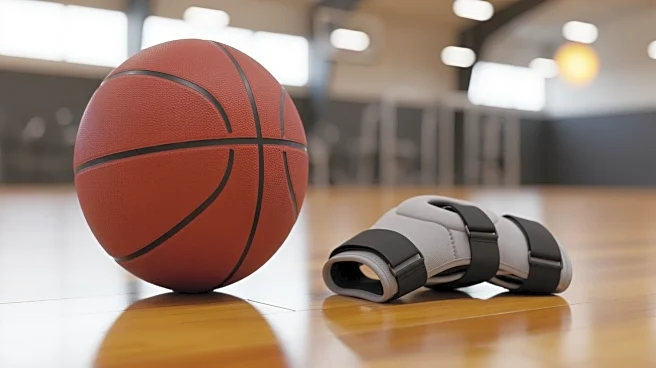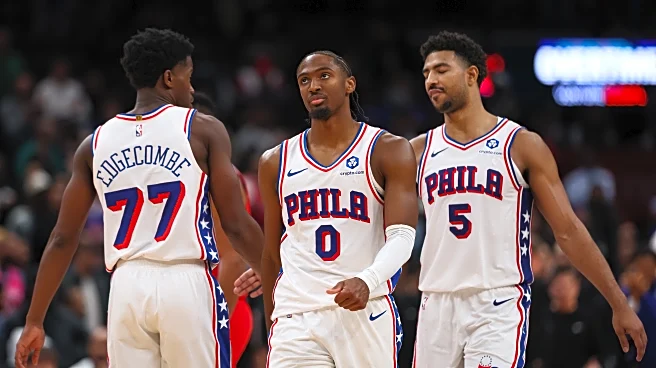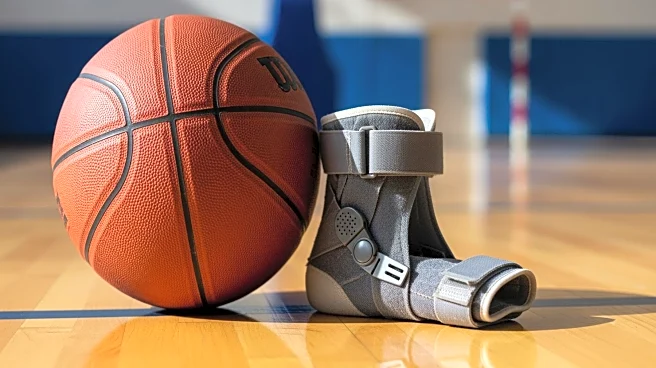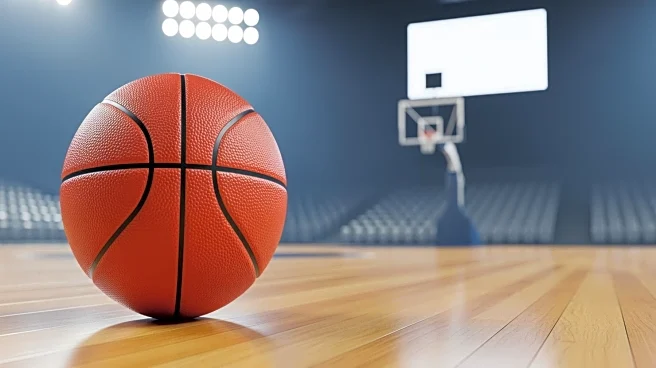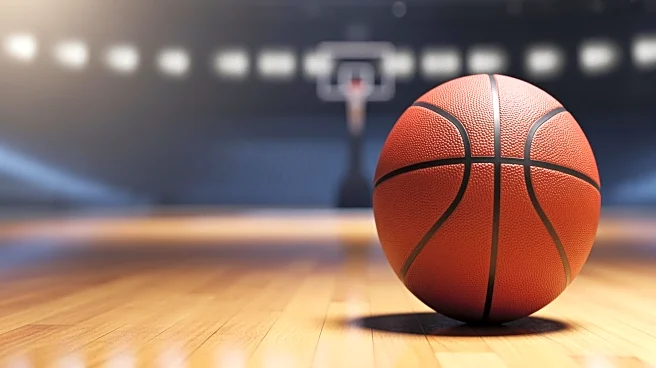What's Happening?
Joel Embiid, the star center for the Philadelphia 76ers, has been officially ruled out of the game against the Los Angeles Clippers due to ongoing right knee soreness. This marks the fourth consecutive
game Embiid will miss, following initial soreness experienced during a shootaround before a game against the Boston Celtics last week. Despite imaging showing no structural damage, the discomfort persists, limiting Embiid's participation this season. He has played in six games, averaging 19.7 points, 5.5 rebounds, 3.3 assists, and 1.5 blocks per game. The 76ers have faced several injury challenges this season, including limited appearances from second-year guard Jared McCain and veteran forward Paul George, who has yet to debut following offseason knee surgery.
Why It's Important?
Joel Embiid's absence is significant for the Philadelphia 76ers, as he is a key player whose performance greatly influences the team's success. His ongoing knee issues could impact the team's standing in the Eastern Conference, where they currently hold a 7-5 record. The 76ers have managed to maintain a decent start despite these setbacks, but prolonged absences of key players like Embiid could affect their playoff prospects and overall team dynamics. The situation highlights the importance of player health and management in professional sports, particularly in a competitive league like the NBA.
What's Next?
The Philadelphia 76ers will need to continue managing their roster effectively to compensate for the absence of Joel Embiid and other injured players. The team may explore strategic adjustments or rely on other players to step up in Embiid's absence. Monitoring Embiid's recovery and ensuring he returns to full health will be crucial for the team's long-term success. Additionally, the potential return of Paul George could provide a boost to the team's performance once he is cleared to play.
Beyond the Headlines
The recurring injuries among key players like Joel Embiid and Paul George raise questions about the physical demands placed on athletes and the effectiveness of current injury prevention and management strategies. This situation may prompt discussions within the league about improving player health protocols and exploring innovative approaches to reduce injury risks.


